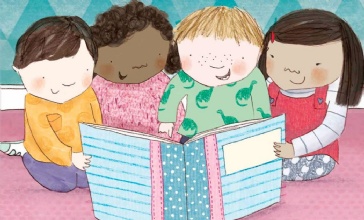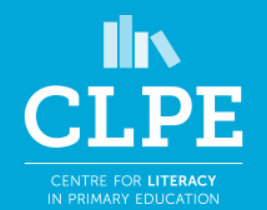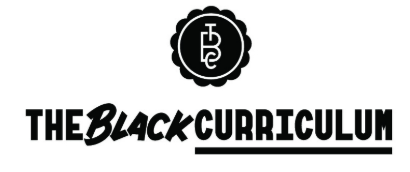Seeing in colour

“I would like to be known as a person who is concerned about freedom and equality and justice and prosperity for all people.” - Rosa Parks
You will no doubt have seen news regarding anti-racism protests across America and, more recently, within the UK. Your children may also have overheard snippets of the news or household discussions about the recent events that have sparked outrage in communities.
At this prevalent time, Ramsgate Arts Primary School feels it our duty to ensure we are taking action to support and educate our pupils by helping them to make sense of a potentially very confusing time.
What do we want to achieve?
We believe that providing young people with the knowledge (at an age-appropriate level) to develop an understanding of racism and inequality is fundamental to breaking down the systems that have led to the unjust oppression of BAME people and communities.
Among other key drivers, we pledge as a school to show a commitment to the following aims:
- Stand together against racism as an anti-racist school. This means we will challenge any overt or covert racism directly and fairly.
- To ‘see colour’, acting pre-emptively to ensure representation of BAME people and communities in our curriculum.
- To evaluate and reflect on our school practices, seeking ways to make sure we do the very best we can.
Why do we want to achieve this?
If our children are to grow into successful members of society, they must first understand themselves and others. This is why we aim to embed our school’s core values to help our pupils develop into kind, hard-working and collaborative citizens. One important aspect of understanding society is developing an accurate understanding of the way current society has been formed and has adapted over many years.
Society isn’t perfect. We believe that young people should learn to be analytical in the constructs they find themselves within, drawing upon their core values as key drivers to assess and make sense of the world around them. We want them to ask difficult questions like - ‘Is this right?’ and ‘Is this fair?’
What can be done at home?
Young people are curious by nature as they try to navigate and understand the world around them, so it is normal for children to have questions about the things happening in society.
When your children ask questions about race, ethnicity, inequality or racism, it is not unusual to feel unsure about how to answer these questions. In this way, topics such as these can feel uneasy or even too challenging to tackle, often being avoided completely. But at Ramsgate Arts Primary School, we feel it both necessary and significant to find the courage to speak to young people about inequality and racism that communities and individuals can face.
For this reason, we have brought together some resources that can help make sense of difficult themes. Please find attached below various links to websites that support discussions about racism and book recommendations for a range of age groups. In addition to these resources, we have included a parent help guide which includes tips and suggestions when talking to your children about racism.
"In a racist society it is no longer enough to be non-racist. We must be anti-racist.” - Angela Davis
Ten Top Tips and Suggestions for Talking to Children about Racism
It is important to acknowledge that there are people in the world that are treated differently mainly because of the colour of their skin.
It is ok to use the words black people, mixed heritage or people of colour to talk about the fact that these are mostly the people who are speaking up about wanting to be treated fairly.
It is also important to understand that race is only the things that make us look different. We may have learnt that it has deeper biological or intellectual differences, but this is false.
It may seem more appropriate and perhaps easier to teach our children not to see colour and to assume that we could never be racist in a place where people seem to live peacefully together. This, in fact, deepens the problem. We cannot know each other’s experiences unless we talk about them, learning from each other and allowing ourselves time to reflect. Pretending not to see colour or differences can lead to ignoring people’s experiences if they look different to you. It is important to celebrate our differences and our similarities because we are all in this together.
Here are our Top Ten tips to help you tackle talking about racism with your children. Below are links to useful websites that support these actions;
- Get comfortable talking and learning about race, racism, and racial inequity yourself first.
Parents can often feel reluctant to talk about race with children because they worry that they don't know enough or will make a mistake. There are indeed age-appropriate ways to explain structural racism and implicit bias to young children, but first adults must fully understand these concepts themselves. If you were not taught these things, it is certainly not your fault. It is, however, your responsibility to do the work to learn more now. If you are not used to thinking and talking about these things in your everyday life, make a concerted effort to do so. It is our responsibility to educate ourselves and to be aware of our own implicit biases that can affect our words and actions around our children. Children can pick up these implicit cues.
- Encourage your child to ask questions.
One of our core school values is ‘Enquiry’. We encourage children to ask questions and to think for themselves. If a child makes a statement or asks a question that strikes you as racially biased, try to understand their thought process instead of shutting them down. Asking them “What makes you think/ask that?” will go a long way in helping you to understand the origin of their ideas. Never silence them or show that asking about someone's skin colour is awkward or embarrassing. We can help our children understand that they can be part of the solution, rather than being part of the problem.
- Don’t claim not to see colour.
Make talking about skin colour normal and encourage respectful curiosity. Race matters, but it is not the only thing that matters about a person. Try not to use skin colour as an identifier such as 'that brown kid’. When we talk about diverse characters and role models, children can understand that not everyone with the same skin colour is the same. This helps to dispel negative stereotypes.
- Read and share books.
Seek out books and resources that will communicate age appropriate messages about race and racism. Also choose a variety of books depicting characters of differing heritages as the protagonists in a variety of genres, and not only in history books, in order to embed the humanity of all experiences. It is never too early to start talking about diversity and to start bringing diverse books into children's lives.
- Use the concept of fairness.
Many children have a keen sense of justice already. They are very passionate about what is fair and right and what is not. Children are already noticing patterns in the world around them and this is your opportunity to help them to think critically about what they’re seeing and hearing, rather than accepting those things as “rules”. Point out the everyday things that make you upset because they are unfair. Encourage empathy and sharing emotions about what makes us feel sad and what we notice makes others feel sad.
- Empower children to make positive change!
We can help our children understand that they can be part of the solution, rather than being a part of the problem. Expose young children to anti-racist role models in our society. Show children that whilst we do face troubling problems as a society, there are (and have always been) people and organisations working to make positive change every day. If embarking on something like this yourself sounds daunting, look for organizations in your community that are already doing anti-racist social justice work.
- Connect the past with the present and future.
Adults often teach children that things used to be ‘really bad’ and that we are lucky the world isn’t like it used to be. While society has come a long way, there is still much work to be done and like the values we teach at school, we can and must always keep learning.
- Be accurate and age appropriate.
It is never too early to start talking about injustice and inequality. Introducing diverse books that are age appropriate into children's lives will support this endeavour. Differentiations can be made between reading to and reading with children. When reading with a child, it can be beneficial to ask open ended questions which will direct the discussion at their level like “What do you see happing in this picture?” or “What do you see that makes you say that?”
- Model anti-racist behaviours for your child.
If you are having conversations about current affairs around children, be assured they can hear you and they will hear more besides what you say. As you probably already know, children rarely buy the “Do as I say, not as I do” approach. If you say something is important, but your children don’t see you behaving in a way that matches your assertion, they know it is not actually very important to you. As mentioned above in another tip, consuming media such as books and television that counter racial stereotypes or speak out against racial inequities is important. We can tell children that these things are important, but we must also model that behaviour for them.
- Encourage complex, critical thinking.
It is important to disrupt the early developmental process of thinking narrowly about people based on what they look like by teaching young children to think in more complex ways. In fact, when children are taught to pay attention to multiple attributes of a person at once, research shows that their levels of bias are reduced. So, help your young child think about people in multiple dimensions. Do they have a relative or friend with whom they share the same skin tone or racial identity, but who likes different things than they like? Do they have a relative or friend who has a different skin tone or racial identity than they do, but who likes the same things they like? Encouraging your child to think about people as multidimensional can help curtail bias.
|
Website |
How is it helpful? |
Link |
|
|
How to talk to your children about race and racism: This page offers useful tips for when conversations about race becomes awkward from parents themselves. |
|
|
|
A blog by paediatricians: |
|
|
|
How to talk to kids about race and racism: This may help you navigate those sensitive and often messy conversations about race. |
|
|
|
How to talk to kids about race: This website includes age-banded recommendations of books and resources that can help. |
https://www.readbrightly.com/how-to-talk-to-kids-about-race-books-and-resources-that-can-help/ |
|
Tips for reading picture books with children through a race conscious lens and general tips and activity suggestions for when you are talking about race with children. |
https://www.embracerace.org/resources/teaching-and-talking-to-kids |
|
|
|
A link to a useful and interesting report: ‘Reflecting realities – A survey of ethnic representation within children’s literature 2018’. |
|
|
|
Re-imagining the future of education through the introduction of Black British history into the curriculum for everyone. |
https://www.theblackcurriculum.com/download
|
|
|
A popular journalism site offering tips for how to raise race-conscious children. |
https://www.buzzfeed.com/erinwinkler/tips-for-talking-to-children-about-race-and-racism |








